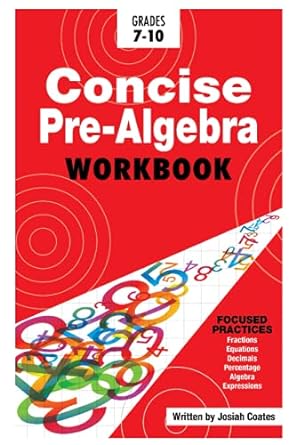Answered step by step
Verified Expert Solution
Question
1 Approved Answer
fData Exploration and Multiple Linear Regression (MLR) using R1 ThetBostontHousingtdatatset,tparttoftthetMASStpackage,trecordstpropertiestoft506thousingtzonestin thetGreatertBostontarea.tFortatdescriptiontoftthetdatat(housingtdatatandtattributetinformation),tvisit https://archive.ics.uci.edu/ml/datasets/Housing. TypicallytonetistinterestedtintpredictingtMEDVt(median hometvalue)tbasedtontothertattributes. 1.tGeneratetbox-plotstoftthetLSTATt(%toftlowertstatustintthetpopulation)tandtMEDVt(medianthome value)tattributestandtidentifytthetcutofftvaluestfortoutliers.tGeneratetatscatterplottoftMEDVtagainst LSTAT;tcommenttonthowtinclusiontoftthetoutlierstwouldtaffecttatpredictivetmodeltoftmedianthometvalue astatfunctiontoft%toftlowertstatustintthetpopulation. 2.tTryttotfittantMLRttotthistdataset,twithtMEDVtastthetdependenttvariable.tMEDVthastatsomewhat longishttailtandtistnottsotGaussian-like,tsotwetwillttaketatlogttransform,t(usetLMEDVt=t-tlog(MEDV)t),tand thentpredicttLMDEVtinstead.t(Youtshouldtconvincetyourselftthattthististatbettertideatbytlookingtattthe histogramstandtquantiletplotsttotassesstnormality;thowevertnotneedttotsubmittsuchtplots).tKeeptthe firrstt300trecordstastattrainingtsett(calltittBostrain)twhichtyoutwilltusettotfittthetmodel;tthetremainingt206 willtbetusedtastattesttsett(Bostest).tUsetonlytthetfollowingtvariablestintyourtmodel: LMEDVt=tLSTATt+tRMt+tCRIMt+tZNt+tCHAS.
\fData Exploration and Multiple Linear Regression (MLR) using R1 The\t\"Boston\tHousing"\tdata\tset,\tpart\tof\tthe\tMASS\tpackage,\trecords\tproperties\tof\t506\thousing\tzones\tin the\tGreater\tBoston\tarea.\tFor\ta\tdescription\tof\tthe\tdata\t(housing\tdata\tand\tattribute\tinformation),\tvisit https://archive.ics.uci.edu/ml/datasets/Housing. Typically\tone\tis\tinterested\tin\tpredicting\tMEDV\t(median home\tvalue)\tbased\ton\tother\tattributes. 1.\tGenerate\tbox-plots\tof\tthe\tLSTAT\t(%\tof\tlower\tstatus\tin\tthe\tpopulation)\tand\tMEDV\t(median\thome value)\tattributes\tand\tidentify\tthe\tcutoff\tvalues\tfor\toutliers.\tGenerate\ta\tscatterplot\tof\tMEDV\tagainst LSTAT;\tcomment\ton\thow\tinclusion\tof\tthe\toutliers\twould\taffect\ta\tpredictive\tmodel\tof\tmedian\thome\tvalue as\ta\tfunction\tof\t%\tof\tlower\tstatus\tin\tthe\tpopulation. 2.\tTry\tto\tfit\tan\tMLR\tto\tthis\tdataset,\twith\tMEDV\tas\tthe\tdependent\tvariable.\tMEDV\thas\ta\tsomewhat longish\ttail\tand\tis\tnot\tso\tGaussian-like,\tso\twe\twill\ttake\ta\tlog\ttransform,\t(use\tLMEDV\t=\t-\tlog(MEDV)\t),\tand then\tpredict\tLMDEV\tinstead.\t(You\tshould\tconvince\tyourself\tthat\tthis\tis\ta\tbetter\tidea\tby\tlooking\tat\tthe histograms\tand\tquantile\tplots\tto\tassess\tnormality;\thowever\tno\tneed\tto\tsubmit\tsuch\tplots).\tKeep\tthe firrst\t300\trecords\tas\ta\ttraining\tset\t(call\tit\tBostrain)\twhich\tyou\twill\tuse\tto\tfit\tthe\tmodel;\tthe\tremaining\t206 will\tbe\tused\tas\ta\ttest\tset\t(Bostest).\tUse\tonly\tthe\tfollowing\tvariables\tin\tyour\tmodel: LMEDV\t=\tLSTAT\t+\tRM\t+\tCRIM\t+\tZN\t+\tCHAS. 3.\tReport\tthe\tcoefficients\tobtained\tby\tyour\tmodel.\tWould\tyou\tdrop\tany\tof\tthe\tvariables\tused\tin\tyour model\t(based\ton\tthe\tt-scores\tor\tp-values)? 4.\tReport\tthe\tMSE\tobtained\ton\tBostrain.\tHow\tmuch\tdoes\tthis\tincrease\twhen\tyou\tscore\tyour\tmodel\t(i.e., predict)\ton\tBostest? 5.\t(Bonus\t1\tpoint).\tUse\tthe\tstepwise\tregression\tto\treach\tyour\tfinal\tmodel.\tTry\tdifferent\tmodel\tsection criteria\t(i.e.,\tAIC,\tCp,\tBIC,\tadj\tR^2,\tR^2)\tand\tsee\tif\tyou\tcan\tcome\tup\twith\tthe\tsame\tmodel\teven\twith\tthe different\tcriteria. Determine\tthe\tbest\tmodel\tif\tyou\tget\tdifferent\tmodels\twith\tdifferent\tcriteria? We\twill consider\ta\tmodel\tthat\tgives\tthe\thighest\taccuracy\t(in\tterms\tof\tMSE)\tin\tthe\ttest\tset\tas\tthe\tbest\tmodel. 1 You\tmust\tuse\tR\tto\trun\tregression\talthough\tuse\tof\tother\tsoftware\tis\talso\tencouraged\tfor\tverification\tof\tyour answers. Data Exploration and Multiple Linear Regression (MLR) using SAS The \"Boston Housing" data set, part of the MASS package, records properties of 506 housing zones in the Greater Boston area. For a description of the data, see Moodle2 (housing data and attribute information). Typically one is interested in predicting MEDV (median home value) based on other attributes. (a) Generate box-plots of the LSTAT (% of lower status in the population) and MEDV (median home value) attributes and identify the cutoff values for outliers. Generate a scatterplot of MEDV against LSTAT; comment on how inclusion of the outliers would affect a predictive model of median home value as a function of % of lower status in the population. (Hint: Such effects may be easier to visualize if the outliers are a different symbol than the other data.) (b) Try to fit an MLR to this dataset, with MEDV as the dependent variable. MEDV has a somewhat longish tail and is not so Gaussian-like, so we will take a log transform, (use LMEDV = - log(MEDV) ), and then predict LMDEV instead. (You should convince yourself that this is a better idea by looking at the histograms and quantile plots to assess normality; however no need to submit such plots). Keep the firrst 300 records as a training set (call it Bostrain) which you will use to fit the model; the remaining 206 will be used as a test set (Bostest). Use only the following variables in your model: LMEDV = LSTAT + RM + CRIM + ZN + CHAS. (a) Report the coefficients obtained by your model. Would you drop any of the variables used in your model (based on the t-scores or p-values)? (b) Report the MSE obtained on Bostrain. How much does this increase when you score your model on Bostest? (c) (Bonus 2 points). Do you think your MLR model is reasonable for this problem? You may look at the distribution of residuals to provide an informed
Step by Step Solution
There are 3 Steps involved in it
Step: 1

Get Instant Access to Expert-Tailored Solutions
See step-by-step solutions with expert insights and AI powered tools for academic success
Step: 2

Step: 3

Ace Your Homework with AI
Get the answers you need in no time with our AI-driven, step-by-step assistance
Get Started


